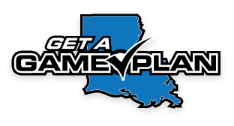Individuals With Disabilities
Being prepared for emergencies can reduce the fear, panic, and inconvenience that surrounds a disaster.
Check for hazards in the home.
During and right after a disaster, ordinary items in the home can cause injury or damage. Anything that can move, fall, break or cause fire is a home hazard. Check for items such as bookcases, hanging pictures, or overhead lights that could fall in an earthquake or a flood and block an escape path.
Be ready to evacuate.
Have a plan for getting out of your home or building (ask your family or friends for assistance, if necessary). Also, plan two evacuation routes because some roads may be closed or blocked in a disaster.
Have disaster supplies on hand:
- Flashlight with extra batteries.
- Portable, battery-operated radio and extra batteries.
- First aid kit and manual.
- Emergency food and water.
- Non electric can opener.
- Essential medicines
- Cash and credit cards
- Sturdy shoes.
Maintain a list of the following important items and store it with the emergency supplies. Give a copy to another family member and a friend or neighbor.
- Special equipment and supplies, e.g., hearing aid batteries
- Current prescriptions names and dosages
- Names, addresses, and telephone numbers of doctors and pharmacist
- Detailed information about the specifications of your medication regime
Create a self-help network of relatives, friends or co-workers to assist in an emergency.
If you think you may need assistance in a disaster, discuss your disability with relatives, friends, and co-workers and ask for their help. For example, if you need help moving or require special arrangements to receive emergency messages, make a plan with friends. Make sure they know where you keep emergency supplies. Give a key to a neighbor or friend who may be able to assist you in a disaster.
Contact your local emergency information management office now.
Many local emergency management offices maintain registers of people with disabilities so they can be located and assisted quickly in a disaster.
Wearing medical alert tags or bracelets to identify your disability may help in case of an emergency.
Know the location and availability of more than one facility if you are dependent on a dialysis machine or other life-sustaining equipment or treatment.
If you have a severe speech, language, or hearing disability:
- When you dial 9-1-1, tap space bar to indicate TDD call.
- Store a writing pad and pencils to communicate with others.
- Keep a flashlight handy to signal whereabouts to other people and for illumination to aid in communication.
- Remind friends that you cannot completely hear warnings or emergency instructions. Ask them to be your source of emergency information as it comes over their radio.
- If you have a hearing ear dog, be aware that the dog may become confused or disoriented in an emergency. Store extra food, water and supplies for your dog.
Planning for Evacuation
People with disabilities have the same choices as other community residents about whether to evacuate their homes and where to go when an emergency threatens. Listen to the advice of local officials. Decide whether it is better to leave the area, stay with a friend or go to a public shelter. Each of these decisions requires planning and preparation.
If you need a wheelchair:Show friends how to operate your wheelchair so they can move you if necessary. Make sure your friends know the size of your wheelchair in case it has to be transported.
Associated Resources
For more information on emergency preparedness planning for individuals with disabilities, elders, and their familes, please review the State Resource Guide for Individuals with Disabilities.
